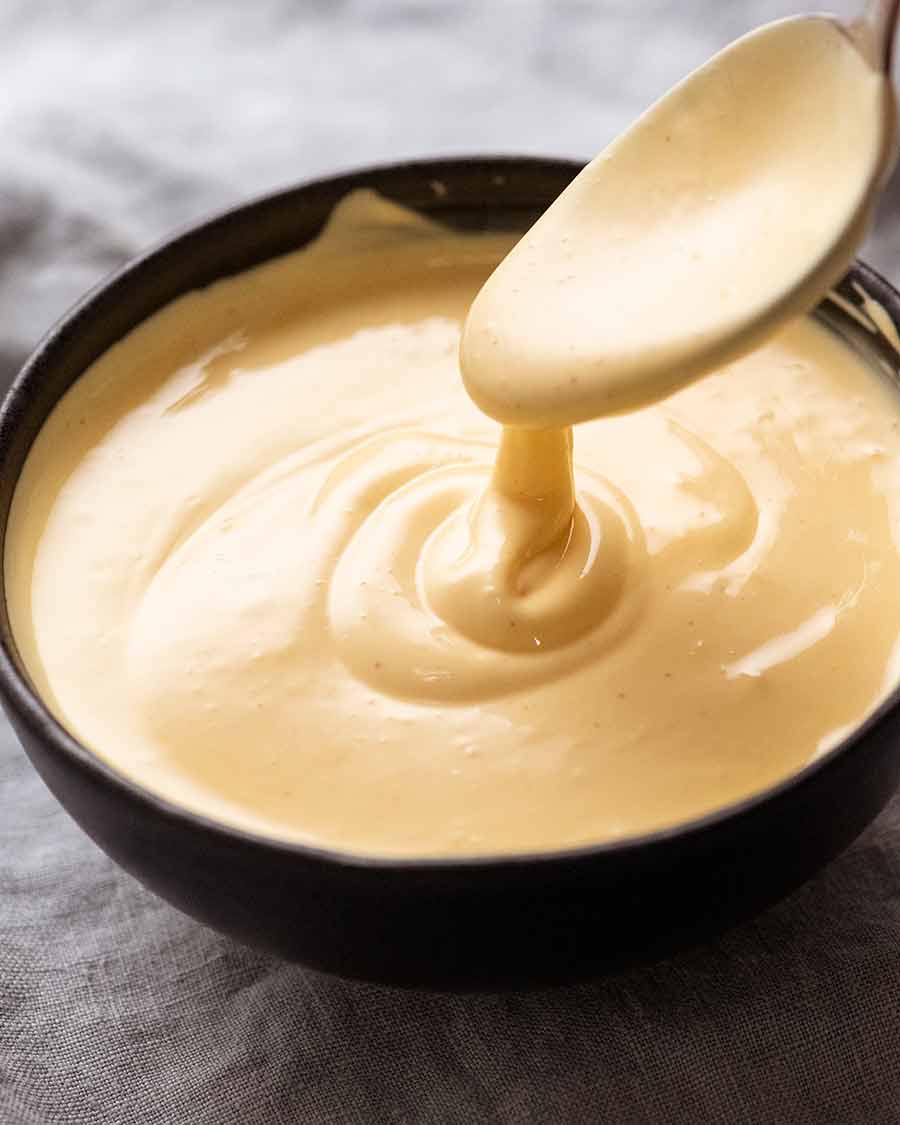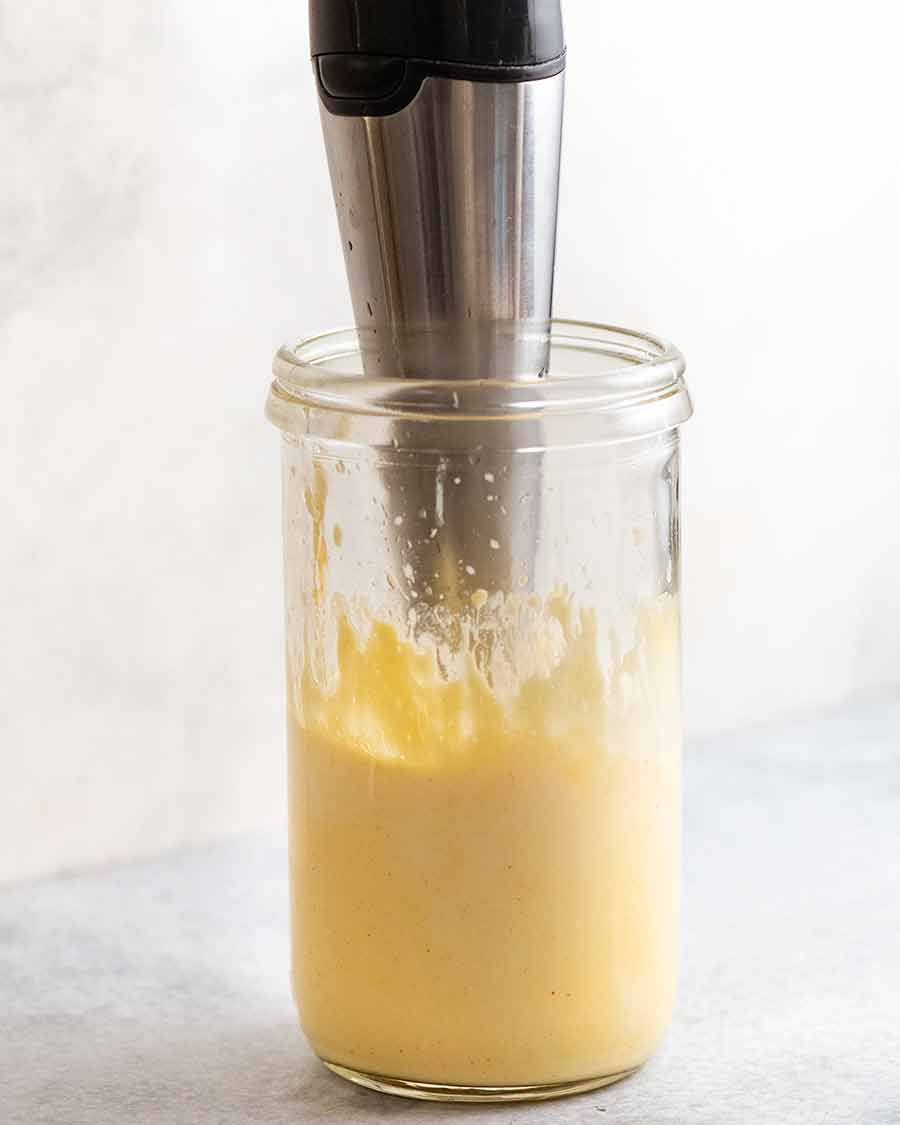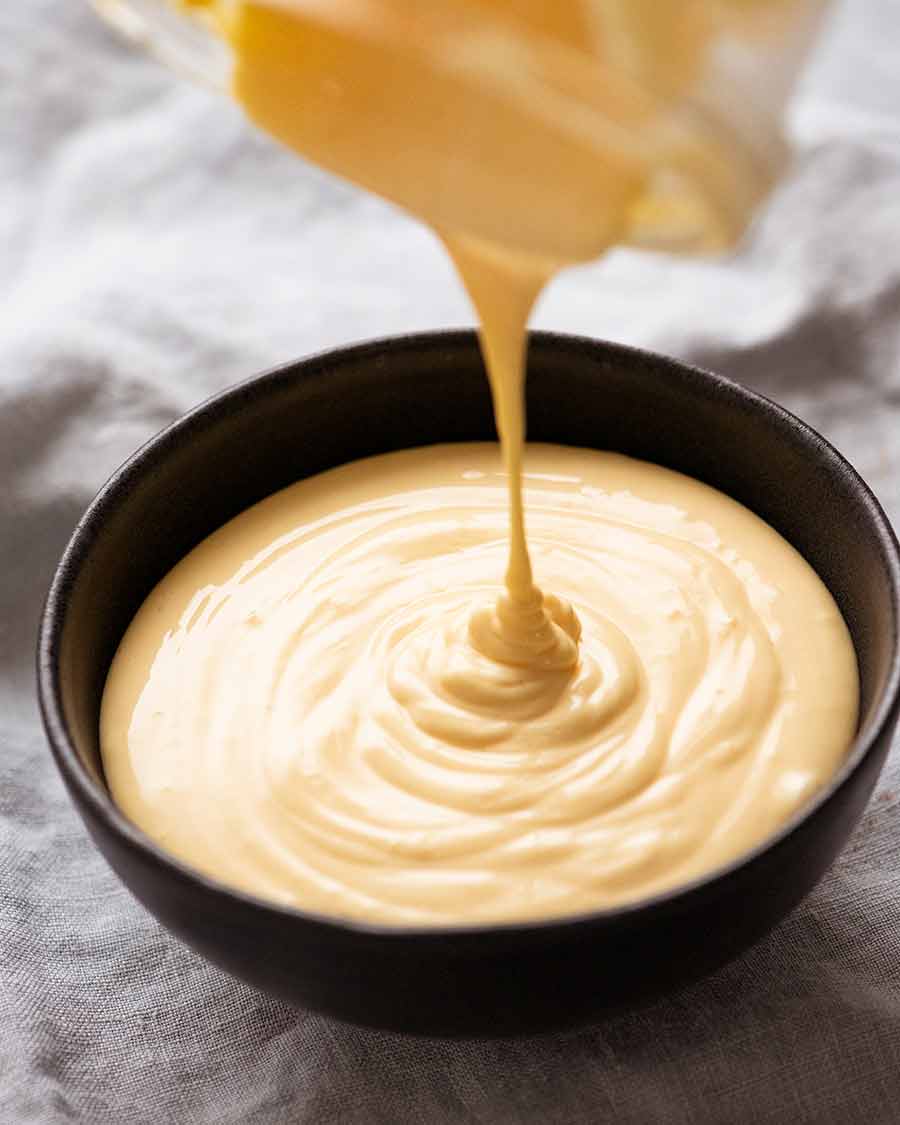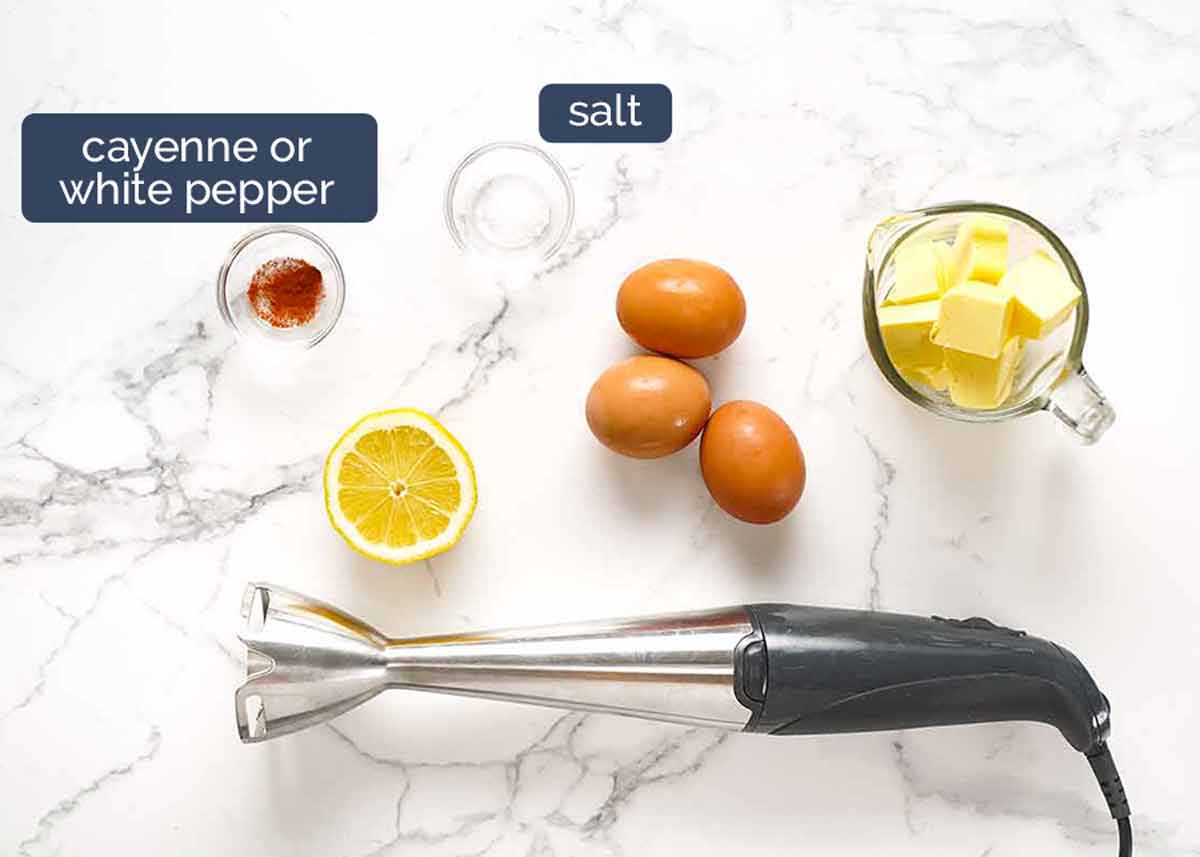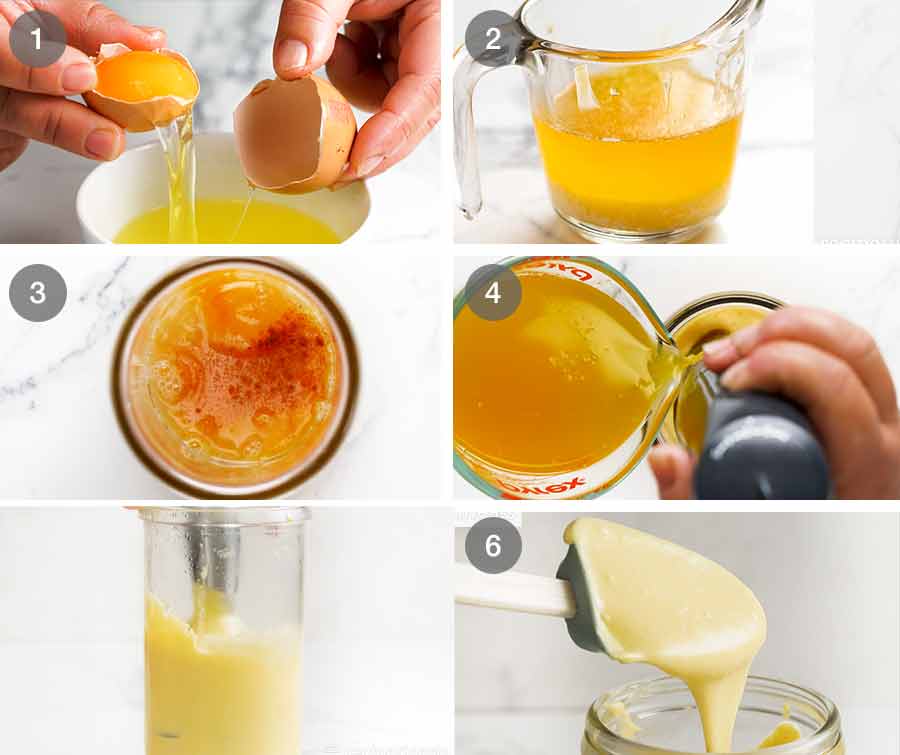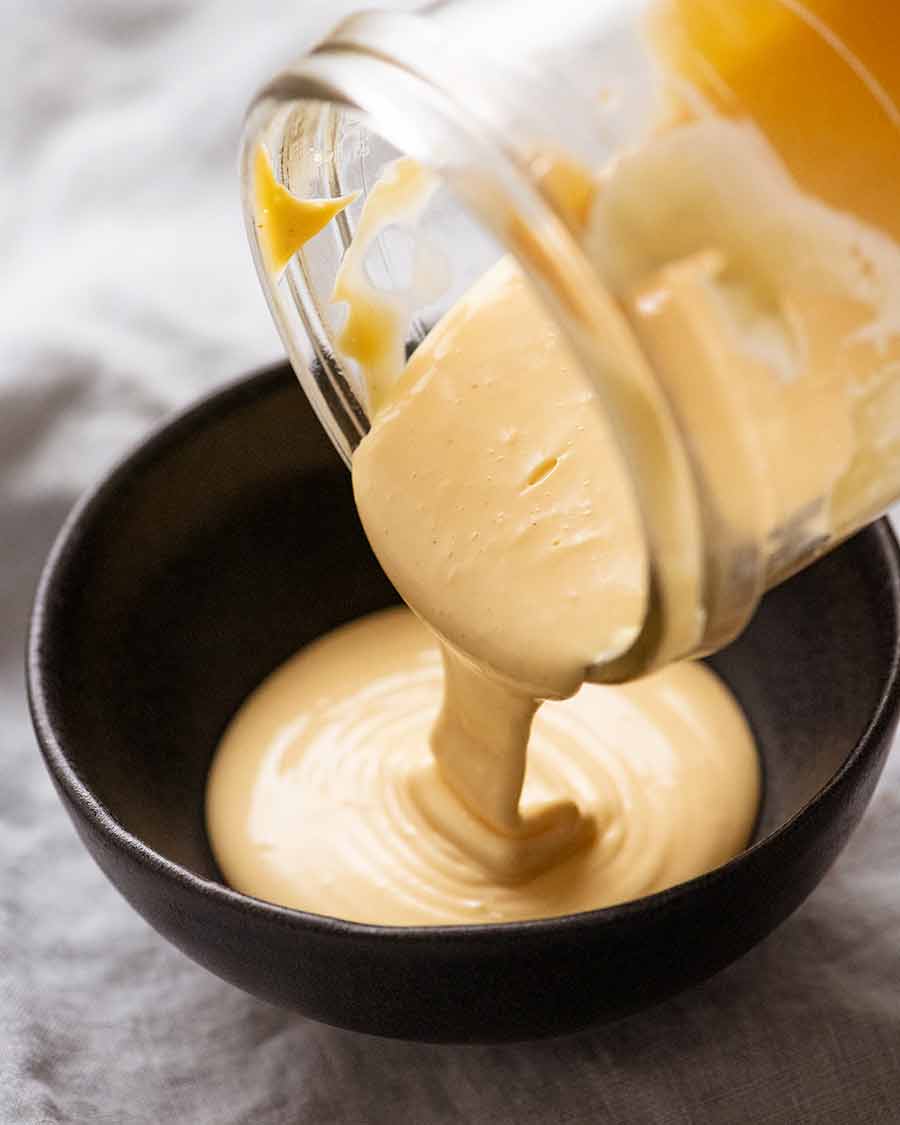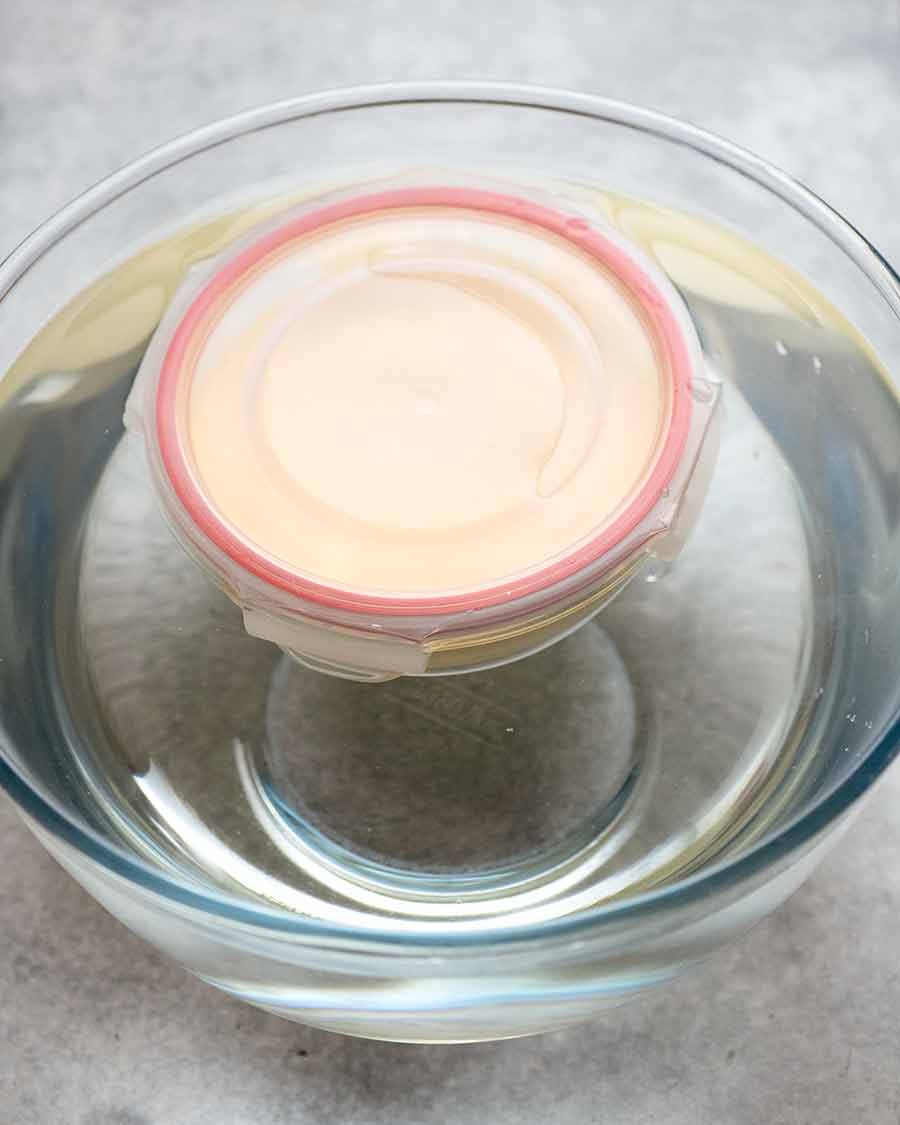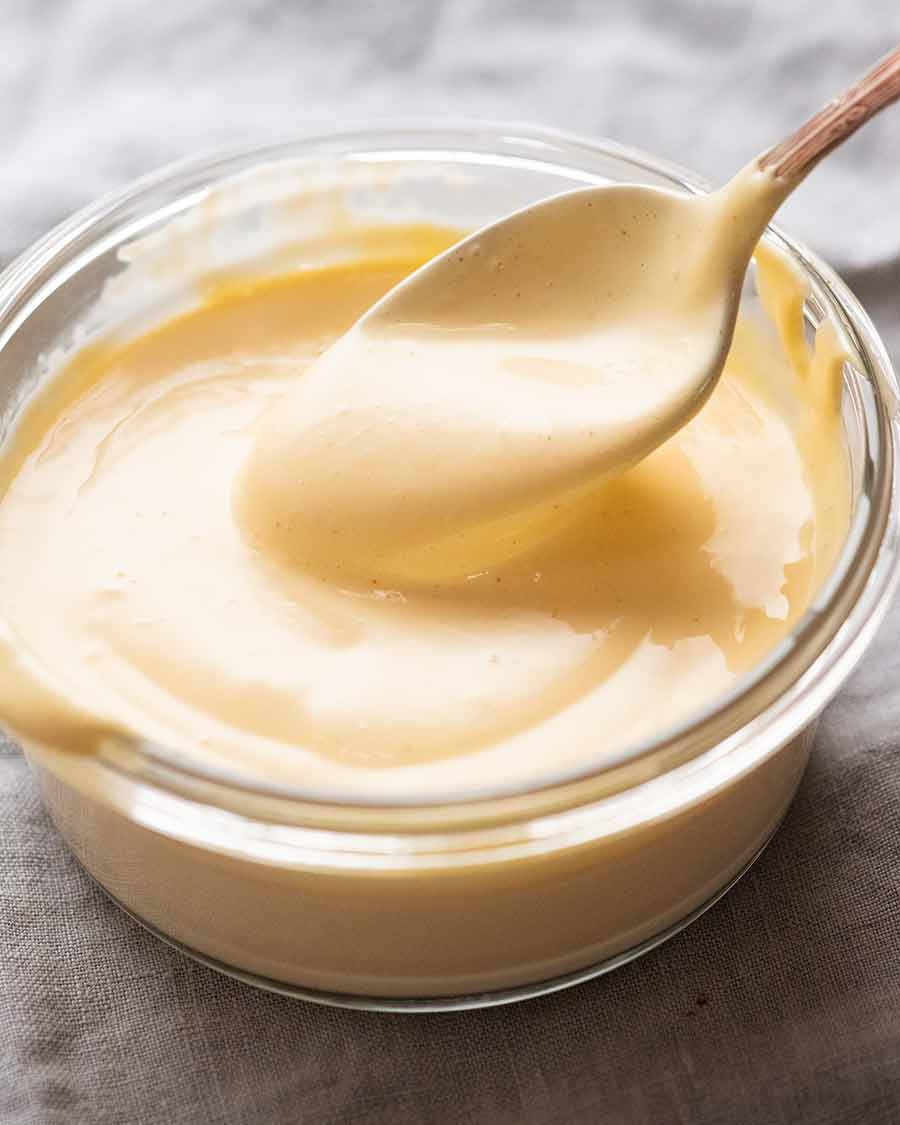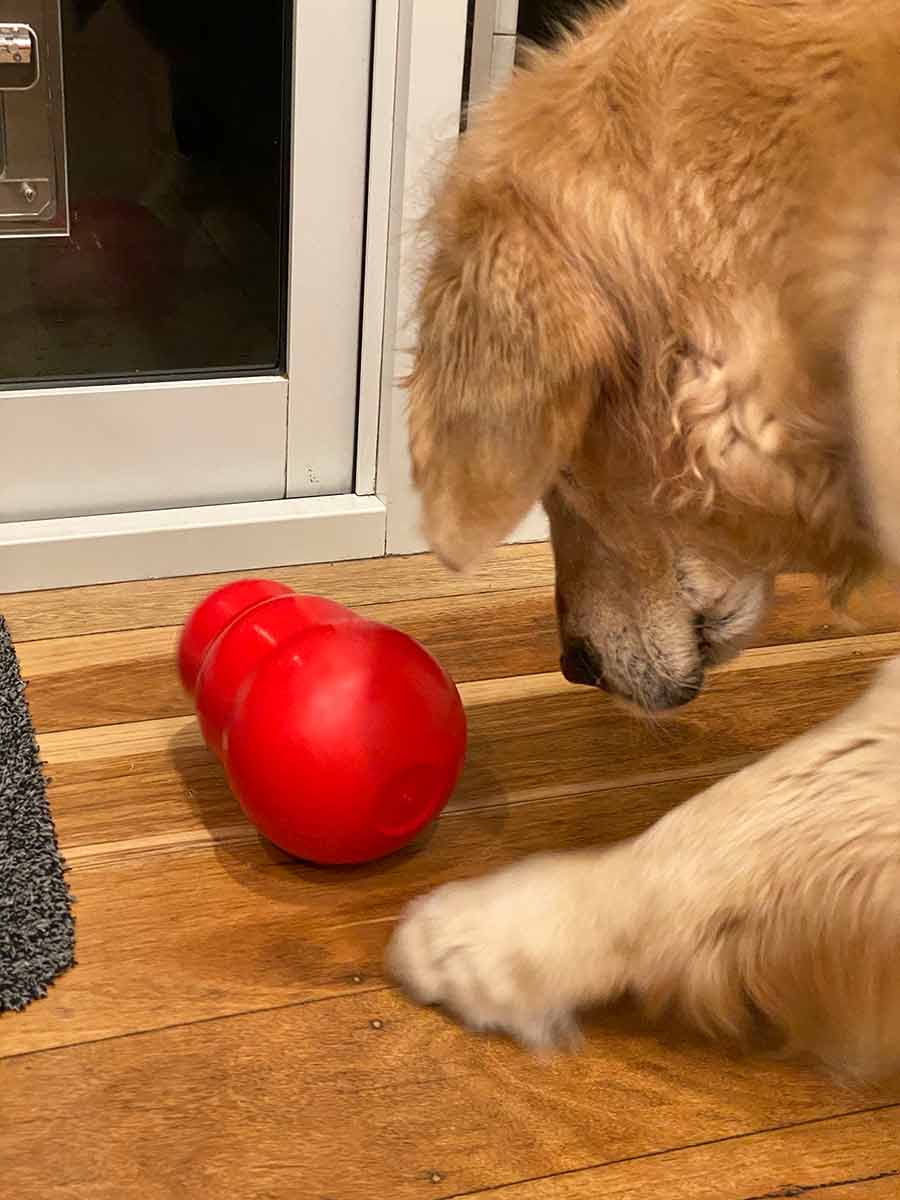Use for Eggs Benedict and steamed asparagus, and it’s also particularly spectacular with crustaceans such as lobster, crab, prawns/shrimp and scallops.
Hollandaise Sauce
This classic sauce is regarded as one of the most technically challenging in the French cooking repertoire. Traditionally made with just a whisk and bowl set over a double boiler, it takes a good 10 to 15 minutes of vigorous whisking. If the heat is too high you end up with scrambled eggs. Too low, then the sauce never thickens. If the butter cools too much, it will split. And if you don’t whisk vigorously enough, then the sauce never emulsifies. Though I can understand that there is a sense of accomplishment making Hollandaise Sauce the traditional way, advances in technology have given us the ability to use faster, easier techniques that produces results with exactly the same quality as hand-whisked. So while I am sure that many professional chefs probably scoff at the thought of making Hollandaise Sauce using a blender – or immersion blender, as is the case with this recipe – it makes difficult sauces like Hollandaise Sauce not just accessible to ordinary folk like myself, but dead easy and foolproof!
I prefer using a handheld blender rather than blender jug because it’s easier to scrape out every drop of the precious sauce!
Hollandaise Sauce ingredients
Here’s what goes in Hollandaise Sauce: egg yolks, butter, salt, lemon juice and a pinch of cayenne pepper, if you want a touch of subtle warmth.
Egg yolks – from 3 large eggs (and sold labelled as “large” at grocery stores), each egg weighing 55 – 60g / 2 oz. Even larger eggs will also work just fine. Smaller eggs may NOT work because there’s not enough yolks to emulsify the butter quantity. You need around 55g/1.9 oz yolks total – if you’re quite short of this, then add more egg yolk (whisk an extra yolk to break it up and pour in amount required). The typical composition of an egg is 60% whites, 30% yolk and 10% shell – do the maths! Butter OR Ghee / clarified butter – butter is the fat used in Hollandaise Sauce. For a more concentrated buttery flavour, you can use ghee or clarified butter, if you happen to have either on hand. But there’s no need to get it specifically – you’ll see in the recipe that I discard the milk solids in the melted butter.
Ghee and clarified butter are the same thing, and in a nutshell it’s butter with the milk solids removed (hence “clarified”) to leave behind pure fat with a more intense buttery flavour that also has a higher smoke point than un-clarified butter. It can be used in things like sauces, such as this Lemon Butter Sauce for Fish, to make Butter Popcorn without it going soggy, and by the bucketload in Indian curries such as everybody’s favourite Butter Chicken and Tikka Masala;
Lemon juice – for a touch of tang. In pure, classical Hollandaise Sauce made at fine dining restaurants, the tang typically comes from vinegar infused overnight with a subtle flavouring which is then reduced down to a glaze. That’s typically not required for homemade Hollandaise Sauce – lemon does just nicely! PRO TIP: the amount of lemon used comes down to personal taste, but when adjusting, bear in mind the use of the sauce. For Eggs Benedict, the sauce is mixed up with lots of other stuff so the intensity of tang is diluted, so make it a bit tangier than you want. If poured over asparagus or other non-porous things, then make the sauce exactly as tangy as you want the end result to be. Salt – as with the tip for lemon juice, adjust the saltiness based on what you’re using it for. The ham, bacon or smoked salmon used for Eggs Benedict is salty, so the sauce doesn’t need to have too much salt in it. If you’re using it for plain steamed asparagus on the other hand, you may like to make the sauce saltier. If you’re using it for pan fried fish that’s been sprinkled with salt, then make it less salty. And so on. Recipe as written provides two salt quantities: 1) 1/4 tsp for Eggs Benedict and other “salted” foods; and 2) 3/8 tsp for plain unsalted steamed foods; Cayenne pepper – just a pinch, for a subtle touch of heat. You can use also hot sauces if you want – eg. a dash of tabasco. If you want to use pepper, opt for white pepper instead of black so the flecks aren’t visible. Otherwise, use finely ground black pepper.
How to make Hollandaise Sauce
And here’s how to make Hollandaise Sauce – the easy way! I prefer to use a handheld blender stick because getting the sauce out of a blender is annoying, and I always feel like you lose too much. This stuff is valuable! 😂
See section below for how to reheat Hollandaise Sauce.
How to reheat Hollandaise Sauce
Hollandaise Sauce that cools from warm to room temperature will thicken slightly but still be pourable and can be used. Once the sauce hits a hot poached egg say, it warms it up. Fridge cold Hollandaise Sauce is very thick – it has a peanut butter consistency. You need to be extremely careful reheating it to ensure that you don’t cook the eggs – even setting a bowl over another boil with boiling water is unreliable and will make the eggs scramble as I found out first hand! I find the best way to gently reheat Hollandaise Sauce is to submerge a sealed container in a bowl of warm water no hotter than 50°C/122°F (just very warm tap water). Leave it for around 20 minutes, stir sauce, change the water and repeat, until it is slightly warmer than room temp and pourable.
See? It’s back to freshly made perfection!
What to use Hollandaise Sauce on
This beautiful sauce is like an elegant, pourable, better version of Mayonnaise. It’s a brunch staple for Eggs Benedict, will instantly fancy up any steamed vegetable and because Hollandaise Sauce is rich yet delicate, it’s an excellent sauce for seafood. Especially expensive seafood, like lobster and scallops! Here are some suggestions:
Eggs Benedict – with ham, smoked salmon or bacon, this is the classic dish that most people associated with Hollandaise Sauce; Steamed Asparagus – the other classic way to serve Hollandaise Sauce; Fish – Use for any relatively plainly prepared fish fillets, such as poached (salmon or trout are especially good) or a simple pan sear like this Crispy Pan Fried Fish; Lobster – boil it, drain it, then serve with this sauce. Instant fancy! Crab – this is a sauce that is worthy of serving with sweet crab meat! Prawns/shrimp – Hollandaise is a spectacular dipping sauce for peeled cooked plain prawns. Or individual servings, aka Prawn Cocktail style, but drizzled with Hollandaise Sauce instead of tossed with Cocktail Sauce; Poached chicken breast – a perfect sauce to create an easy, light yet elegant chicken dish worthy of a dinner party; Green beans, runner beans – steamed, boiled, or grilled, like asparagus are a great pairing; Artichokes – if you can get them and prepare them, fresh artichokes (simply boiled, or roasted/grilled) are wickedly good friends with hollandaise; and Steak – Béarnaise sauce is simply hollandaise flavoured with tarragon, and one of the absolute classic sauces for steak. While making proper Bearnaise is a little more involved, a simple shortcut is to just add chopped tarragon to hollandaise. Else, plain hollandaise as-is with steak is still a winner!
Basically, a little Hollandaise Sauce will fancy up anything. It’s like putting on your favourite sparkly earrings when you’ve thrown on whatever – it’ll bring instant bling to even your daggiest outfit! – Nagi x
Watch how to make it
Life of Dozer
His current favourite toy – because it makes a total racket as he bashes it about to knock out treats from a small hole. What was I thinking, getting this for him??😖
